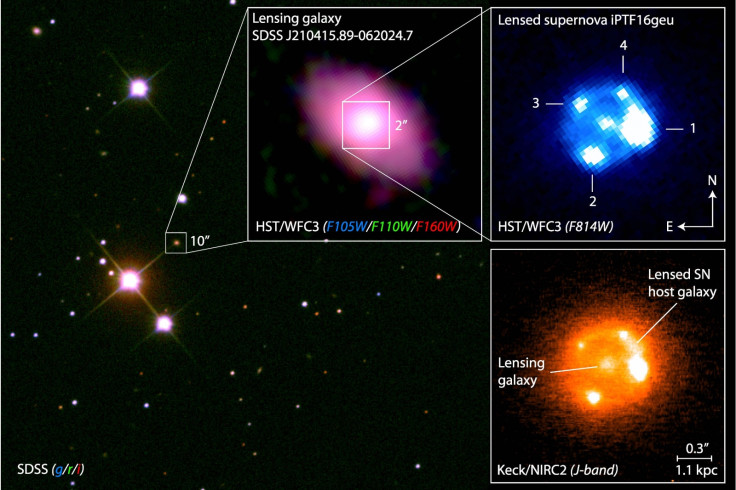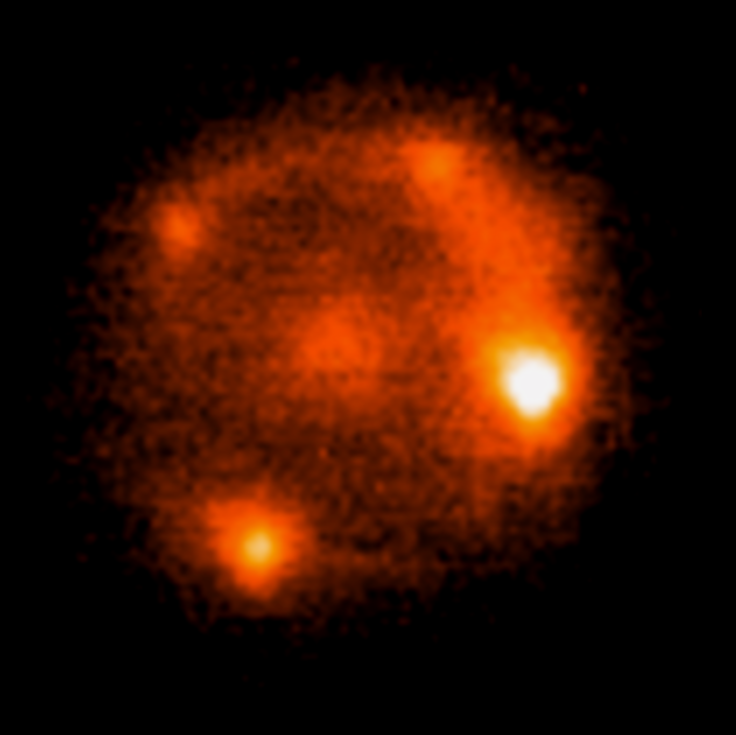Extremely unlikely twist of fate reveals supernova's secrets through gravity lens
Cosmic alignment of supernova iPTF16geu with gravity lens reveals stunning images.

In a very rare series of events, scientists have captured a view of a ''standard candle'' Type Ia supernova through a gravity lens.
Gravity lenses are predicted by Einstein's theory of general relativity. They happen when a massive object, such as a galaxy, bends spacetime around it. This causes light passing through it to bend as well. If an object – such as a supernova – is positioned in exactly the right place behind the gravity lens, then it can be magnified.
This is exactly what happened when astronomers observed the supernova iPTF16geu through the gravity lens of a galaxy 2 billion light years away. The incoming light the supernova was split into four distinct images, which were magnified about 50 times.
"I've been looking for a lensed supernova for about 15 years. I looked in every possible survey, I've tried a variety of techniques to do this and essentially gave up, so this result came as a huge surprise," study author Ariel Goobar of Stockholm University said in a statement.
"One of the reasons I'm interested in studying gravitational lensing is that it allows you to measure the structure of matter – both visible and dark matter – at scales that are very hard to get."
Type Ia supernovas are also known as standard candles because they have a consistent peak brightness during the supernova explosion. This allows a precise calculation of the distance of the supernova from Earth.
"It is extremely difficult to find a gravitationally lensed supernova, let alone a lensed Type Ia. Statistically, we suspect that there may be approximately one of these in every 50,000 supernovae that we identify," said Peter Nugent of Berkeley Lab's Computational Research Division, also an author of the study.

The finding will help to measure the rate of the universe's expansion with unprecedented accuracy. It will also aid understanding of the distribution of dark matter and ordinary matter in space at a very large scale.
The findings are published in a paper in the journal Science.

© Copyright IBTimes 2025. All rights reserved.






















